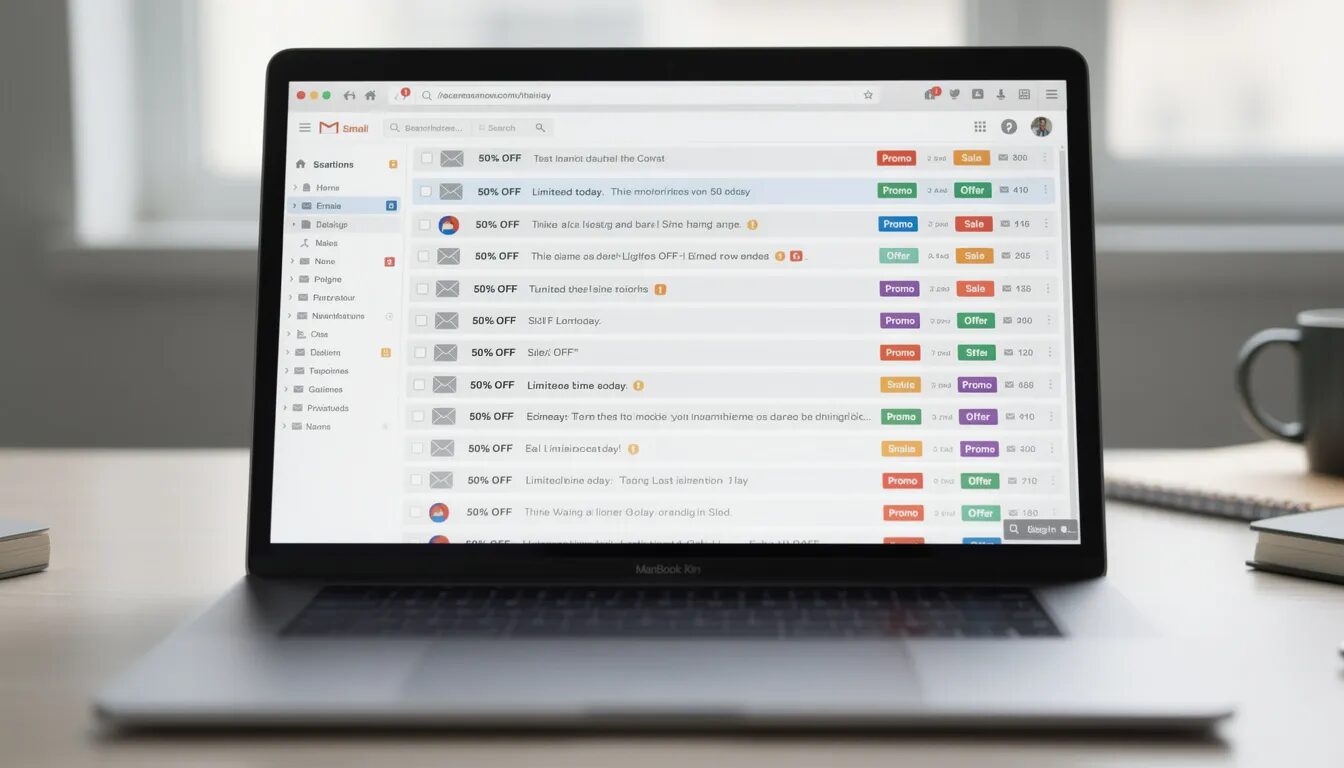
Top NPO Tips for Email Marketing to Boost Engagement
Email marketing can transform how nonprofit organizations (NPOs) communicate with supporters, boost donations, and spread their mission. In this article, we’ll share essential NPO tips for email marketing, ranging from building a robust email list to creating personalized content, all aimed at maximizing engagement and impact.
Key Takeaways
-
Building a robust email list is crucial for successful email marketing, and strategies include using signup forms, lead magnets, and collecting emails at events.
-
Segmenting your email list based on demographics, behavior, and interests ensures targeted communication, increasing engagement and preventing messages from being marked as junk.
-
Crafting compelling subject lines using numbers, personalization, and urgency can significantly boost open rates and engagement in email campaigns.
Building a Strong Email List

A successful email marketing strategy begins with having a robust email list. It amplifies the returns on email campaigns by connecting with a specific, engaged audience. Here are some steps to help you build your email list:
-
Review your saved contacts from various email providers.
-
Check virtual event platforms for attendee emails.
-
Find the right people to promote your cause.
Offering valuable reasons for people to subscribe and using signup forms, lead magnets, and events can significantly grow your email subscribers list.
Using Signup Forms
Attracting new subscribers to your nonprofit’s email list heavily relies on effective signup forms. Place these forms on high-traffic areas such as:
-
online donation pages
-
volunteer sign-ups
-
event registrations
-
newsletter subscription boxes on your website
By strategically positioning these forms on social media channels, you can capture the interest of potential supporters and grow your email list.
Leveraging Lead Magnets
Encouraging potential supporters to provide their email addresses can be achieved by offering free resources or exclusive content as lead magnets. Downloadable resources such as annual reports, infographics, and advocacy campaign information can serve as effective lead magnets. Supporters need to enter their email addresses to access these resources, which can then be transferred to your CRM.
Collecting Emails at Events
Expanding your nonprofit’s reach and maintaining attendee engagement post-event can be achieved strategically through collecting emails at events. Bring an email sign-up list to every event and collaborate with corporate sponsors to attract their customers and employees. These methods not only increase your email list but also ensure that your supporters remain informed and connected to your cause.
Segmenting Your Email List

To deliver relevant messages to your audience, it’s necessary to segment your email list. By grouping contacts based on similar criteria, such as demographics, behavior, and interests, you can ensure that recipients receive content that resonates with them, increasing engagement and preventing emails from being marked as junk.
Maintaining one master email list with multiple segments can also prevent double-sends and save on email marketing platforms credits.
Demographic Segmentation
Demographic segmentation tailors messages to different audience segments based on age, gender, and location. By understanding the demographics of your subscribers, you can create more relevant and engaging content that speaks directly to their unique needs and interests, thereby boosting engagement.
Behavioral Segmentation
Behavioral segmentation targets messages based on past actions, such as volunteering or attending events. By analyzing your supporters’ behavior, you can send tailored emails that reflect their past interactions with your organization, making your communications more relevant and effective.
Interest-Based Segmentation
Interest-based segmentation tailors content to groups with specific interests, such as event attendees or program supporters. By aligning your email content with the interests of your segments, you can create messages that resonate more deeply with your audience, enhancing their connection to your organization and increasing engagement.
Crafting Compelling Subject Lines

For increased open rates and engagement, it’s vital to craft compelling subject lines. A well-thought-out subject line can make the difference between an email that’s opened and one that’s ignored. Use numbers, personalization, and urgency to grab attention and entice recipients to open your emails.
Use Numbers and Statistics
Incorporating numbers and statistics in your email subject line can significantly boost engagement. Specific numbers make subject lines more eye-catching and credible, increasing the likelihood that recipients will open the email to learn more.
.
Personalization Techniques
Personalizing subject lines with recipients’ names can make them feel valued and increase open rates by 26%. This powerful strategy in email marketing makes recipients feel understood and more likely to engage with your content.
Creating Urgency
Creating urgency in your email subject lines can significantly boost open rates and engagement. Phrases like ‘Don’t miss out,’ ‘Act now,’ or ‘Last chance’ can create a sense of immediacy, compelling readers to act quickly and engage with your emails.
Personalizing Your Email Content

To connect with recipients and boost engagement, personalizing email content is of paramount importance. By using dynamic content blocks, personalized calls to action, and storytelling techniques, you can create emails that resonate with your audience on a personal level.
Dynamic Content Blocks
Dynamic content blocks allow for targeted messages based on supporter data. This modern email marketing software feature enables you to send personalized content that varies depending on the recipient’s information and engagement level.
,,,,.
Personalized Calls to Action
Personalized calls to action generate higher transaction rates and make campaigns more personal. By incorporating the recipient’s name and tailoring the call to action based on past interactions, you can significantly increase conversion rates.
Storytelling Techniques
Storytelling techniques create emotional connections and showcase the impact of donations. Using real-life stories, visual storytelling, and success stories can enhance the engagement and effectiveness of your email campaigns.
Utilizing Marketing Automation

By streamlining the email marketing process, marketing automation allows NPOs to:
-
Create targeted workflows
-
Personalize subscriber experiences
-
Send the right message at the right time
-
Keep supporters engaged and informed
Welcome Series
A welcome email series is crucial for making a great first impression and educating new contacts about your nonprofit’s work. These automated emails can encourage new subscribers to take further actions and stay engaged with your organization.
Donor Thank You Series
A donor thank you series shows appreciation and inspires continued support. These automated emails can be triggered when a donor completes a desired action, such as making a donation, and can follow up on the impact of their contributions.
Event Reminders
Event reminders keep supporters informed about upcoming events. By scheduling and sending these automatically, you ensure that your audience remains engaged and aware of important activities.
Designing Mobile-Friendly Emails
For ensuring accessibility and readability on various devices, it’s important to design mobile-friendly emails. With a significant portion of email opens occurring on mobile devices, using responsive design principles, testing across devices, and simplifying layouts can enhance engagement.
Responsive Design Principles
Responsive design principles ensure that emails adjust their layout and content dynamically based on the screen size. Using flexible grids, images, and single-column layouts can enhance readability on mobile devices.
Testing Across Devices
Testing emails across various devices helps identify and fix rendering issues. Using email testing tools can preview how emails look on different screen sizes and email clients, ensuring a consistent experience for all recipients.
Simplifying Layouts
Simplified email layouts improve readability and ensure key messages are not missed on smaller screens. Single-column layouts and concise messaging can enhance the mobile experience for your audience.
Analyzing and Optimizing Performance
Understanding the impact of your campaigns necessitates the analysis and optimization of email performance. By tracking key metrics, conducting A/B testing, and making regular adjustments, you can continually improve your email marketing strategy and achieve better results.
Key Metrics to Track
Tracking key metrics such as open rates, click-through rates, and conversion rates is essential for measuring the success of your email campaigns. These metrics provide insights into subscriber interaction and overall campaign performance.
A/B Testing
A/B testing is a powerful method for refining your email marketing strategies. By comparing two versions of an email to determine which performs better, you can identify the most effective elements, such as subject lines, content, or calls to action.
Regular A/B testing helps discover what resonates most with your audience, leading to more successful campaigns.
Regular Review and Adjustment
Regularly reviewing and adjusting your email marketing strategies based on performance data is essential for continuous improvement. Here are some steps you can take to optimize your email list:
-
Conduct periodic email list pruning to identify inactive segments, outdated or incorrect emails, and high unsubscribe rates.
-
Understand why subscribers are leaving to help you strategize re-engagement or decide to let them go.
-
Ensure your list remains healthy and engaged by regularly monitoring and analyzing your email performance data.
By following these steps, you can optimize your email list and improve the effectiveness of your email marketing campaigns using email marketing services and email marketing tools.
Best Practices for Nonprofit Email Marketing
The effectiveness of your campaigns can be significantly enhanced by implementing best practices in nonprofit email marketing. Here are some fundamental principles to follow:
-
Comply with anti-spam laws to ensure your emails reach your audience.
-
Maintain a consistent schedule to keep your audience engaged.
-
Deliver value in your communications to keep your audience interested.
-
Make consistent improvements and strategic tweaks to achieve positive results and avoid spam filters.
By following these best practices and examining nonprofit email marketing examples, you can improve the effectiveness of your email marketing for nonprofits and enhance your nonprofit email marketing campaigns for nonprofit organizations.
Complying with Anti-Spam Laws
Compliance with anti-spam laws is vital to prevent your emails from being marked as spam or deleted. It also protects against data breaches and security threats. Essential testing for nonprofit email marketing includes:
-
A/B tests
-
Spam score testing
-
HTML/CSS email template code validation
-
Blacklist presence checks
These tests ensure that your emails are both effective and compliant.
Maintaining a Consistent Schedule
Maintaining a consistent email schedule keeps your nonprofit in the minds of your audience, increasing support when needed. Regular newsletters and informative emails help keep your audience engaged and informed about recent developments and the impact of previous donations.
A content schedule can help you stay organized and ensure regular engagement with your donors.
Delivering Value
Delivering value in your email content is crucial for enhancing donor engagement and support. Here are some strategies to consider:
-
Include countdowns and updates on amounts raised to create a sense of urgency in your fundraising campaign emails.
-
Reference a beneficiary waitlist to show the impact of donations and create a sense of community.
-
Incorporate personalized or emotionally engaging videos to motivate and connect with supporters.
By implementing these strategies, you can effectively deliver value and increase donor engagement in your email content.
Matched gifts can inspire donors to give more, significantly boosting your fundraising campaigns efforts.
Summary
In summary, a robust email marketing strategy for nonprofits involves building a strong email list, segmenting it effectively, crafting compelling subject lines, personalizing email content, utilizing marketing automation, designing mobile-friendly emails, and continuously analyzing and optimizing performance. By implementing these best practices, you can enhance engagement, drive donations, and build lasting relationships with your supporters. Embrace these strategies and watch your nonprofit’s email marketing soar to new heights.
Frequently Asked Questions
Why is segmenting my email list important?
Segmenting your email list is important because it ensures that recipients receive relevant messages that resonate with their specific interests and behaviors, increasing engagement and preventing your emails from being marked as junk.
How can I make my email subject lines more compelling?
To make your email subject lines more compelling, incorporate numbers and statistics, personalize them with recipients’ names, and create a sense of urgency to prompt immediate action. Implementing these tactics can increase engagement and open rates in your email campaigns.
What are the benefits of using marketing automation for email campaigns?
Using marketing automation for email campaigns streamlines the process, allows for personalized subscriber experiences, and ensures that the right message is sent at the right time, keeping supporters engaged and informed. It’s a game-changer for email marketing.
How can I ensure my emails are mobile-friendly?
To ensure your emails are mobile-friendly, use responsive design principles, test across various devices, and simplify your layouts. This ensures your emails look great and are easy to read on all devices.
What key metrics should I track to measure the success of my email campaigns?
You should track open rates, click-through rates, and conversion rates to measure the success of your email campaigns. These metrics give you insights into subscriber interaction and overall campaign performance, enabling data-driven decisions.
Are you interested in finding out more? Browse the rest of our blog for other marketing tips. If you’re ready to create your first email, survey, sign-up form, or landing page then register for a free trial to get the tools you need to build powerful marketing campaigns!
© 2024, Vertical Response. All rights reserved.



